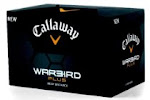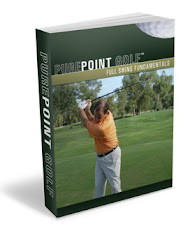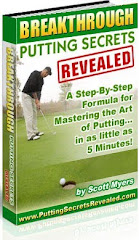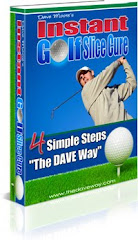The Oldsmobile Cutlass was a great car, but you've probably traded it in by now. You've also chucked the cassette tapes. Why? Because better-performing options came along, making them obsolete. It's time to apply that thinking to your irons.
The main reason golfers hold on to irons past their prime is that the technology is often hidden in a plain shape and presented in a quiet way. Such visual understatement leads consumers to believe irons are short on science and engineering, making their clubs as good as new ones. That is shortchanging the upgraded benefits of today's models.
The creative use of technology and materials has never been more prevalent in irons. Some of it you see (better-designed soles to improve turf interaction) and some you don't (optimal center-of-gravity positions).
Additionally, driver technologies, such as trampoline faces and high moment of inertia, have trickled down to irons. That wasn't the case five years ago.
You might consider your old irons to be trusted allies, but new ones will give you a better chance to get reacquainted with someone you might not have seen in a while: Mr. Green In Regulation.
Read More http://www.golfdigest.com/golf-equipment/2010-05/obsolete-list-irons#ixzz0mW95mT4m
Thursday, April 29, 2010
Hybrids: Make the big Leap!
The evolution of the hybrid is similar to that of snowboards: an offbeat, intriguing, even necessary idea with early shortcomings that eventually changed the sport. In 2004, the Darrell Survey Company polled golfers and found that fewer than 1 in 12 carried a hybrid club; but today 1 in 2 golfers carry a hybrid.
Although the first hybrids were admirable as a solution to hard-to-hit long irons, the latest versions have made fundamental advancements in playability. Designers are now able to create a large face and still save weight (about double that of five years ago), which can help position the center of gravity lower and deeper to optimize ball flight. Freeing weight leads to design ideas that couldn't be implemented previously. For example, the soles on early hybrids often were flat and ineffective, but today's leading edges and sole-bounce angles allow the clubs to move through the turf more easily. Another advancement is the ability to individually adjust head shape and size as lofts change. That makes high-lofted hybrids easier to maneuver and low-lofted ones more forgiving.
These improvements have made the hybrid golf's must-have club.
HOW MUCH LIFE IS LEFT?
There are grades of obsolescence. Our four judges, after consulting with members of our academic and retail panel to help determine what keeps a club relevant, assigned a level of "life remaining" to each club. None of the battery icons is completely full. Only current products might achieve that. Three-quarters full, and you're still OK. Half full means it's time to at least start looking. One-quarter full, and you'd better be buying. The red light on? Don't play with these again. Ever.
By Mike Stachura, Golf Digest April, 2010
Read More http://www.golfdigest.com/golf-equipment/2010-05/obsolete-list-hybrids#ixzz0mW5tE000
Although the first hybrids were admirable as a solution to hard-to-hit long irons, the latest versions have made fundamental advancements in playability. Designers are now able to create a large face and still save weight (about double that of five years ago), which can help position the center of gravity lower and deeper to optimize ball flight. Freeing weight leads to design ideas that couldn't be implemented previously. For example, the soles on early hybrids often were flat and ineffective, but today's leading edges and sole-bounce angles allow the clubs to move through the turf more easily. Another advancement is the ability to individually adjust head shape and size as lofts change. That makes high-lofted hybrids easier to maneuver and low-lofted ones more forgiving.
These improvements have made the hybrid golf's must-have club.
HOW MUCH LIFE IS LEFT?
There are grades of obsolescence. Our four judges, after consulting with members of our academic and retail panel to help determine what keeps a club relevant, assigned a level of "life remaining" to each club. None of the battery icons is completely full. Only current products might achieve that. Three-quarters full, and you're still OK. Half full means it's time to at least start looking. One-quarter full, and you'd better be buying. The red light on? Don't play with these again. Ever.
By Mike Stachura, Golf Digest April, 2010
Read More http://www.golfdigest.com/golf-equipment/2010-05/obsolete-list-hybrids#ixzz0mW5tE000
Fairway Woods: When Are You Loyal to a Fault?
Fairway woods age gracefully. Their slip into obsolescence is quiet. While your eye is always wandering for a new big dog, the fairway wood is a loyal dog. To put it down can break your heart.
But the reality is, over time all dogs lose steps to the pack. Because clubhead crowns can be cast half as thick as they could a decade ago, modern fairway woods are bigger with lower centers of gravity that make it easier to launch the ball for distance (the 1998 Callaway Steelhead was 137 cubic centimeters; today's fairway woods are as big as 200cc). The deep-face woods of the past were effective as driving clubs off the tee, but when used from a tight fairway lie, the ball could balloon significantly, affecting distance. Although modern fairway woods have wider soles, they're made to look pleasing. Designers fiddle with crown curvature and other transitions to make woods play big while maintaining a compact look.
Unlike drivers, only a handful of fairway woods to date have achieved the USGA coefficient of restitution (springlike effect) limit of .83. As designers get better and better, count on a lot more clubs in this category becoming obsolete.
HOW MUCH LIFE IS LEFT?
There are grades of obsolescence. Our four judges, after consulting with members of our academic and retail panel to help determine what keeps a club relevant, assigned a level of "life remaining" to each club. None of the battery icons is completely full. Only current products might achieve that. Three-quarters full, and you're still OK. Half full means it's time to at least start looking. One-quarter full, and you'd better be buying. The red light on? Don't play with these again. Ever.
Article by Max Adler Golf Digest April, 2010
Read More http://www.golfdigest.com/golf-equipment/2010-05/obsolete-list-woods#ixzz0mW1nqUFq
But the reality is, over time all dogs lose steps to the pack. Because clubhead crowns can be cast half as thick as they could a decade ago, modern fairway woods are bigger with lower centers of gravity that make it easier to launch the ball for distance (the 1998 Callaway Steelhead was 137 cubic centimeters; today's fairway woods are as big as 200cc). The deep-face woods of the past were effective as driving clubs off the tee, but when used from a tight fairway lie, the ball could balloon significantly, affecting distance. Although modern fairway woods have wider soles, they're made to look pleasing. Designers fiddle with crown curvature and other transitions to make woods play big while maintaining a compact look.
Unlike drivers, only a handful of fairway woods to date have achieved the USGA coefficient of restitution (springlike effect) limit of .83. As designers get better and better, count on a lot more clubs in this category becoming obsolete.
HOW MUCH LIFE IS LEFT?
There are grades of obsolescence. Our four judges, after consulting with members of our academic and retail panel to help determine what keeps a club relevant, assigned a level of "life remaining" to each club. None of the battery icons is completely full. Only current products might achieve that. Three-quarters full, and you're still OK. Half full means it's time to at least start looking. One-quarter full, and you'd better be buying. The red light on? Don't play with these again. Ever.
Article by Max Adler Golf Digest April, 2010
Read More http://www.golfdigest.com/golf-equipment/2010-05/obsolete-list-woods#ixzz0mW1nqUFq
Monday, April 19, 2010
How can you tell if your driver is obsolete?
To the avid golfer, the introduction of a new driver is like the unveiling of a new Apple product: cloaked in mystery and full of anticipation. That's because no club in golf changes as quickly or as drastically as the driver. For some manufacturers, driver product cycles are as short as six months, and for most, drivers get the bulk of the company's R&D financing.
The rapid advances in this category usually make the driver the most obsolete club in the average golfer's bag. Think you're up to date because you play with a decent-size titanium driver with a graphite shaft? Think again. If it was made before 2005, retire it. In fact, even if you consider your 2008 TaylorMade r7 CGB Max the latest and greatest, you need to reassess. Since you bought it, TaylorMade has released six new drivers, all with more optimally shaped clubheads, thinner walls and better custom-fitting options.
Our Hot List debuted in 2004. Since then, several technological milestones have occurred: maximum trampoline effect, optimal clubhead volume, higher moment of inertia, adjustability. They all bring us to the same conclusion: If your big stick isn't more or less brand new, you're not helping yourself.
HOW MUCH LIFE IS LEFT?
There are grades of obsolescence. Our four judges, after consulting with members of our academic and retail panel to help determine what keeps a club relevant, assigned a level of "life remaining" to each club. None of the battery icons is completely full. Only current products might achieve that. Three-quarters full, and you're still OK. Half full means it's time to at least start looking. One-quarter full, and you'd better be buying. The red light on? Don't play with these again. Ever.
To find out if your driver is on this list and how much power is left in the battery, refer to E. Michael Johnson's Golf Digest article May, 2010:
http://www.golfdigest.com/golf-equipment/2010-05/obsolete-list-drivers#ixzz0lZCGGTeu
The rapid advances in this category usually make the driver the most obsolete club in the average golfer's bag. Think you're up to date because you play with a decent-size titanium driver with a graphite shaft? Think again. If it was made before 2005, retire it. In fact, even if you consider your 2008 TaylorMade r7 CGB Max the latest and greatest, you need to reassess. Since you bought it, TaylorMade has released six new drivers, all with more optimally shaped clubheads, thinner walls and better custom-fitting options.
Our Hot List debuted in 2004. Since then, several technological milestones have occurred: maximum trampoline effect, optimal clubhead volume, higher moment of inertia, adjustability. They all bring us to the same conclusion: If your big stick isn't more or less brand new, you're not helping yourself.
HOW MUCH LIFE IS LEFT?
There are grades of obsolescence. Our four judges, after consulting with members of our academic and retail panel to help determine what keeps a club relevant, assigned a level of "life remaining" to each club. None of the battery icons is completely full. Only current products might achieve that. Three-quarters full, and you're still OK. Half full means it's time to at least start looking. One-quarter full, and you'd better be buying. The red light on? Don't play with these again. Ever.
To find out if your driver is on this list and how much power is left in the battery, refer to E. Michael Johnson's Golf Digest article May, 2010:
http://www.golfdigest.com/golf-equipment/2010-05/obsolete-list-drivers#ixzz0lZCGGTeu
Labels:
drivers,
golf clubs,
golf equipment,
golf game,
golf tips
Are your golf clubs obsolete?
For seven years Golf Digest has produced the Hot List of golf clubs with one purpose: to increase your enjoyment of the game through equipment. The Obsolete List is a project with the same goal but a different path. Instead of recommending the equipment you should put in your bag, the Obsolete List is all about what you should take out.
Oversize drivers, game-changing hybrids, and irons designed for every swing type are readily available, but a staggering number of golfers continue to play with outdated equipment--irons and woods that with each year become increasingly ill-suited to helping them hit the ball farther down the fairway and closer to the hole.
Those using obsolete clubs do so for various reasons, and it's not necessarily because they don't realize their equipment is out of date. Some don't want to spend money on new clubs. But better equipment doesn't have to cost a lot. For starters, your old equipment is a gift card because almost any club can be traded in. Like cars, some bring a better return than others, but no matter how much money you receive, you get a head start on buying a new set.
Still, most of the time finances are not the main consideration. The issue is more intangible than that. It's hard to part with clubs you've become fond of, that you're comfortable playing and that, in many ways, you've come to rely on. It's a sense that your obsolete clubs are "good enough." Except they're not. They're thieves--blatantly stealing strokes-and enjoyment from your game.
Andrew Han's--on the following pages.
The Obsolete List isn't strictly about a club's age. It's about its relevance. How does the technology compare to what's available in the market today? To be sure, there are degrees of obsolescence. The battery icons that accompany our list help define how much "juice" the clubs that appear on the Obsolete List have left. Any clubs that were on our Hot List in 2009 and this year are not, in our minds, obsolete.
You'll find zero putters on the Obsolete List. We acknowledge that today's putters are technologically superior (face treatments, high moments of inertia, enhanced optics) than ones from the past. But we also know that there can be a greater emotional attachment to putters. So our conclusion is, if you're still making 10-footers with your putter, we're willing to give you a pass no matter how outdated it might be.
There are no wedges on our list, either, but for a different reason. Their life span declines more rapidly than that of other clubs. If you play more than 50 rounds a year and practice a lot, especially from the sand, you should replace your wedges during the off-season. In other words, any old, worn wedge is obsolete.
The Obsolete List is a call to evaluate the equipment in your bag. We're not saying your clubs aren't useful. We're saying you can do better--in some cases, a lot better. If your clubs are on this list--or are too old to have been considered--investigate today's technology, and take advantage of it. After all, you don't really want to be obsolete, do you?
STAY TUNED TO OUR BLOG FOR A CLUB BY CLUB BREAKDOWN ON THE OBSOLETE LIST OR GO TO:
Exerpted from Golf Digest article by W. Michael Johnson
Photos by Jim Herity
Read More http://www.golfdigest.com/golf-equipment/2010-05/obsolete-list#ixzz0lZ7GO3WL
Oversize drivers, game-changing hybrids, and irons designed for every swing type are readily available, but a staggering number of golfers continue to play with outdated equipment--irons and woods that with each year become increasingly ill-suited to helping them hit the ball farther down the fairway and closer to the hole.
Those using obsolete clubs do so for various reasons, and it's not necessarily because they don't realize their equipment is out of date. Some don't want to spend money on new clubs. But better equipment doesn't have to cost a lot. For starters, your old equipment is a gift card because almost any club can be traded in. Like cars, some bring a better return than others, but no matter how much money you receive, you get a head start on buying a new set.
Still, most of the time finances are not the main consideration. The issue is more intangible than that. It's hard to part with clubs you've become fond of, that you're comfortable playing and that, in many ways, you've come to rely on. It's a sense that your obsolete clubs are "good enough." Except they're not. They're thieves--blatantly stealing strokes-and enjoyment from your game.
Andrew Han's--on the following pages.
The Obsolete List isn't strictly about a club's age. It's about its relevance. How does the technology compare to what's available in the market today? To be sure, there are degrees of obsolescence. The battery icons that accompany our list help define how much "juice" the clubs that appear on the Obsolete List have left. Any clubs that were on our Hot List in 2009 and this year are not, in our minds, obsolete.
You'll find zero putters on the Obsolete List. We acknowledge that today's putters are technologically superior (face treatments, high moments of inertia, enhanced optics) than ones from the past. But we also know that there can be a greater emotional attachment to putters. So our conclusion is, if you're still making 10-footers with your putter, we're willing to give you a pass no matter how outdated it might be.
There are no wedges on our list, either, but for a different reason. Their life span declines more rapidly than that of other clubs. If you play more than 50 rounds a year and practice a lot, especially from the sand, you should replace your wedges during the off-season. In other words, any old, worn wedge is obsolete.
The Obsolete List is a call to evaluate the equipment in your bag. We're not saying your clubs aren't useful. We're saying you can do better--in some cases, a lot better. If your clubs are on this list--or are too old to have been considered--investigate today's technology, and take advantage of it. After all, you don't really want to be obsolete, do you?
STAY TUNED TO OUR BLOG FOR A CLUB BY CLUB BREAKDOWN ON THE OBSOLETE LIST OR GO TO:
Exerpted from Golf Digest article by W. Michael Johnson
Photos by Jim Herity
Read More http://www.golfdigest.com/golf-equipment/2010-05/obsolete-list#ixzz0lZ7GO3WL
Labels:
golf clubs,
golf equipment,
golf game,
golf putters,
golf tips
Saturday, April 17, 2010
Starting the new golf season ...
For most of the golfers in the U.S. it is finally time to get out and play some golf again. The beginning of another golf season will bring the same old challenges as every year. Rusty swings, chunky chip shots, and terrible putts are awaiting us all. Chances are that it will take a dozen rounds or so before the swing and short game come back but there are some steps that can minimize the damage.
Average golfers tend to favor one club at the range, the driver. This is the exact opposite of any decent players. If the entire game of golf is analyzed, it is easy to see that the driver is rarely hit. The majority of shots are played from 100 yards and in. Given this information it does not make much sense to sit on the range and hit drives all day.
Start of the season at the short game practice area. The first trip to the range should consist completely of putts, chips, and pitch shots. Going to the range and shanking a bucket of drivers is not going start the season off in the correct fashion. Practicing the short game for the majority of the range session will improve your game.
In the early season, concentrate on tempo and solid contact. Find drills that address a specific problem in your swing and work on them as much as possible. If help is needed finding drills please comment with the swing or flight path problem and a recommended drill will be given.
Make the most of this season and start it out the right way. Get the short game in order straight away and your golfing buddies will be paying out all the skins.
Source: blog.americangolf.com
Average golfers tend to favor one club at the range, the driver. This is the exact opposite of any decent players. If the entire game of golf is analyzed, it is easy to see that the driver is rarely hit. The majority of shots are played from 100 yards and in. Given this information it does not make much sense to sit on the range and hit drives all day.
Start of the season at the short game practice area. The first trip to the range should consist completely of putts, chips, and pitch shots. Going to the range and shanking a bucket of drivers is not going start the season off in the correct fashion. Practicing the short game for the majority of the range session will improve your game.
In the early season, concentrate on tempo and solid contact. Find drills that address a specific problem in your swing and work on them as much as possible. If help is needed finding drills please comment with the swing or flight path problem and a recommended drill will be given.
Make the most of this season and start it out the right way. Get the short game in order straight away and your golfing buddies will be paying out all the skins.
Source: blog.americangolf.com
Subscribe to:
Posts (Atom)










